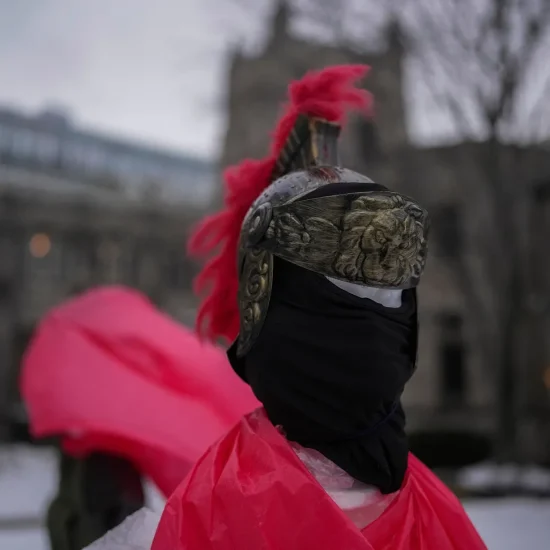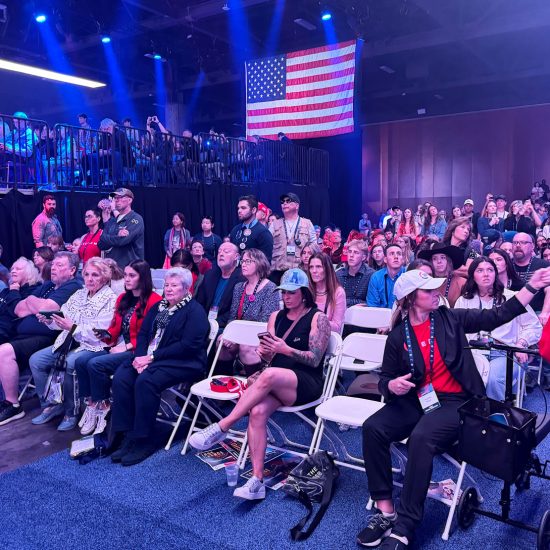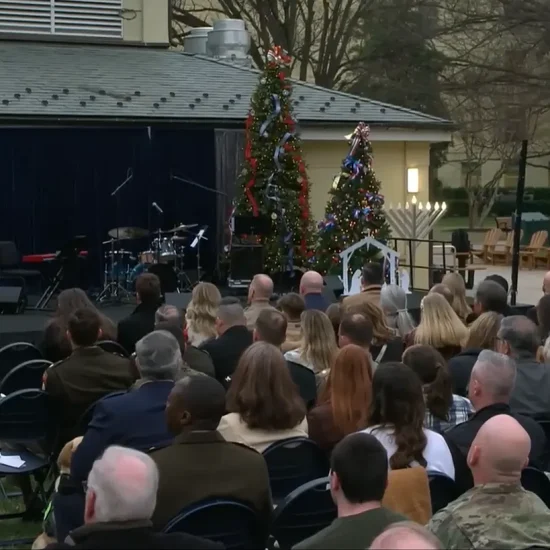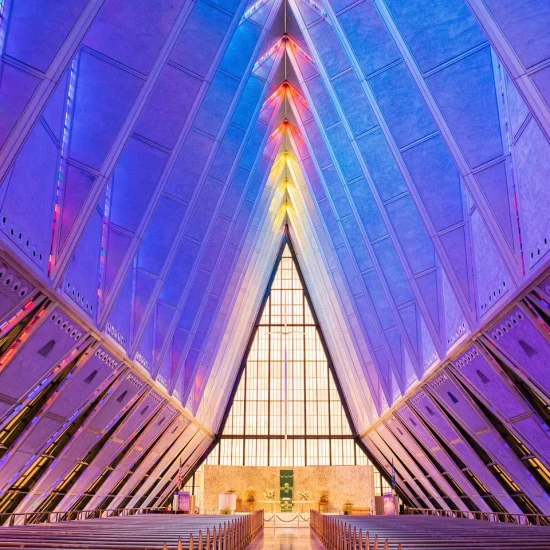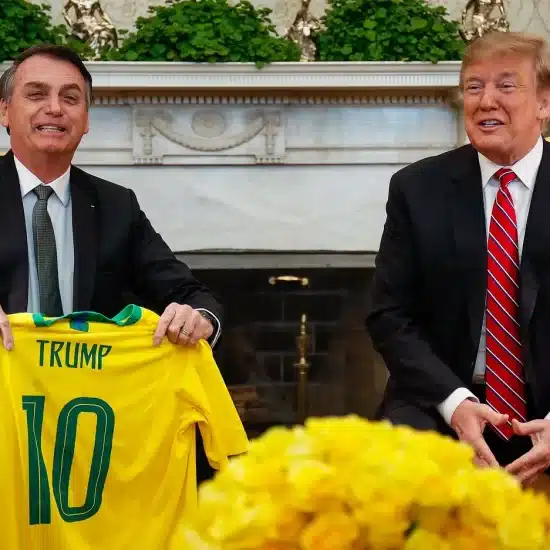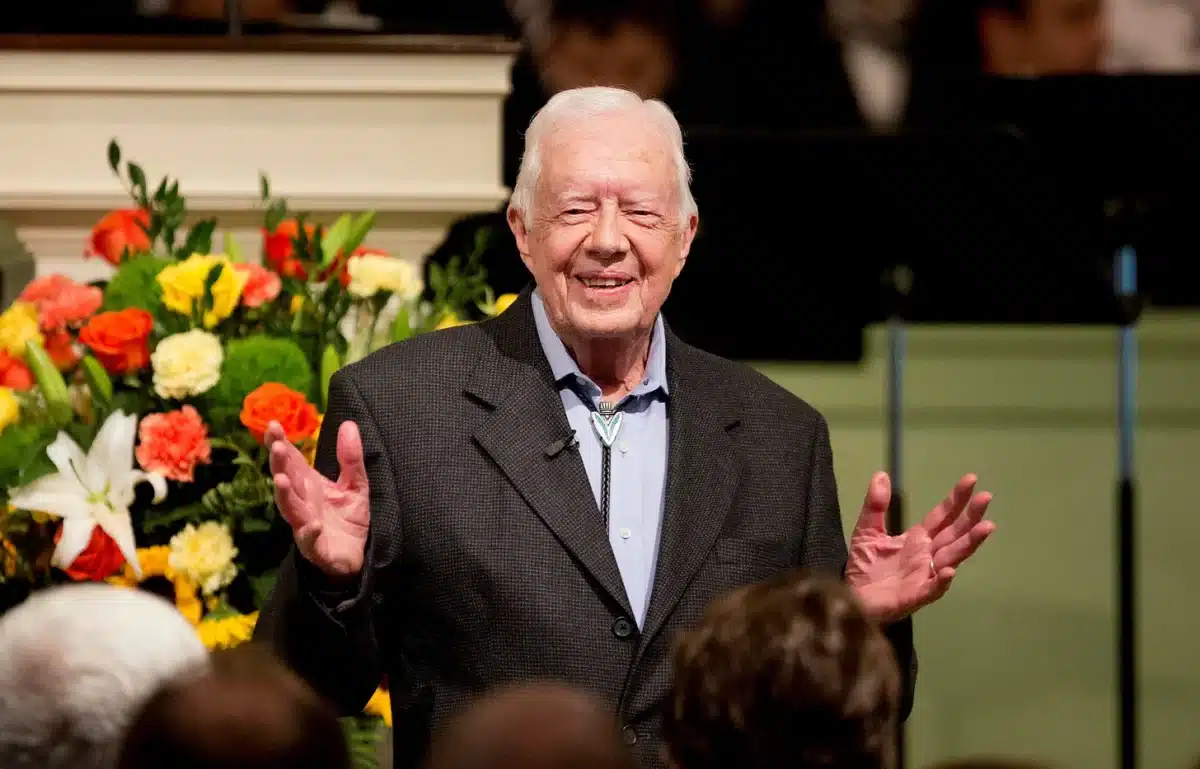
The first time I met Jimmy Carter, my initial thought was, “Oh, I didn’t know he was so short.” Fortunately, I didn’t say it out loud.
I was at the Carter Center in Atlanta, Georgia, in 2007 for a planning meeting for the Celebration of a New Baptist Covenant, a gathering the next year that brought together more than 15,000 Baptists across denominational and racial lines. As a co-chair of the Communications Committee, I showed up for a couple days of meetings. We knew the former president, the main force behind the effort, would come say hello. So as the appointed time neared, we mingled around in a lobby — because you wait for a former president, not the other way around!
Most people waited near the bottom of the grand staircase, expecting the 39th president to make his entrance through the main hallway. I stood off in a corner talking with a couple people when suddenly a simple side door opened and nearly hit me. There stood Carter, who seemed almost as surprised as we were that people were standing so close to the door. He smiled and said “good morning.” I think I managed to mutter back, “Good morning, Mr. President.” But I was thinking about his height.
I guess I expected a moral giant I looked up to for years would be taller. Also, presidents tend to be tall. In fact, in most modern presidential elections the tallest candidate in the general election wins. Carter clocked in at under 5’10’’ (although he was probably a bit shorter by the time I met him), which meant he defeated the taller Gerald Ford. Since then, only George W. Bush and Joe Biden managed to win while shorter. But they are both still tall.
Carter is officially two inches below W. Bush and Biden. He ranks in the bottom third of all U.S. presidents and the shortest since his fellow Baptist, Harry S. Truman. While Carter is average for a U.S. male, he’s way below recent residents of 1600 Pennsylvania Avenue. Ronald Reagan, George H. W. Bush, Bill Clinton, Barack Obama, and Donald Trump all are recorded as above 6’ (and W. Bush and Biden are just a half inch off that mark).
But while Carter might be our shortest modern president, he towers over his peers in many other ways. With the announcement on Saturday (Feb. 18) that the 98-year-old Carter would enter hospice care at home after multiple recent hospital stays, tributes are already pouring in for the man widely called our “greatest ex-president.” In this issue of A Public Witness, I’ll offer my own reflection on the moral exemplar Carter offered not only since his presidency but also during his underappreciated time in the Oval Office.
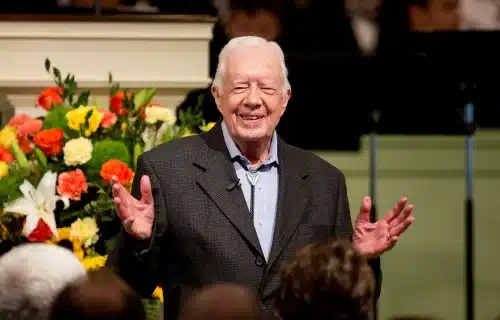
Former President Jimmy Carter teaches a Sunday School class at Maranatha Baptist Church in Plains, Georgia, on Aug. 23, 2015. (David Goldman/Associated Press)
Not Just Peanuts
For most of the 45 men who have taken the presidential oath of office, that moment represents the pinnacle of their life’s work. But for Jimmy Carter, his more than four decades of presidential “retirement” more greatly changed the world for the good and rightly earned him a Noble Peace Prize. It’s hard to overstate or adequately cover the ways this former president advanced peace, healing, human rights, and justice across the globe.
The ink rarely seemed to dry in Carter’s passport as he frequently traveled to some of the most dangerous places in the world to meet with dictators, generals, and others to promote democracy and peace. Sometimes he did so when dispatched by a successor on an official U.S. diplomatic mission, but often Carter freelanced and sometimes publicly pushed for peace in ways that annoyed Republicans and Democrats sitting at the Resolute Desk. This included efforts in Haiti, North Korea, Sudan, and Syria as he helped broker peace deals, obtain the release of imprisoned Americans, and promote human rights for people in their own nations. And the Carter Center observed 113 elections in 39 countries, helping ensure democratic principles and public trust in elections.
Through all of this, he accomplished more for peace and democracy as a former president than any president did in four or eight years in the White House. And this drive came from his faith.
“There is no nobler calling on this Earth than the seeking for peace,” Carter said in 1978. “For it is that reason which caused the Bible to say that peacemakers shall be called the sons of God.”
Although Carter’s international diplomacy efforts have been impressive and important, Dr. Marc Siegel, a professor of medicine at NYU Langone Health, wrote on Presidents Day in USA Today that “his greatest accomplishments have been in the arena of health and welfare.” And the doctor is right.
Carter made this a priority of the Carter Center, which led the effort to target Guinea worm disease. A painful parasitic infection due to contaminated water sources, it afflicted an estimated 3.5 million people each year in 21 African and Asian countries in 1986. By last year, that level had been reduced by more than 99.99% to just 13 cases in four counties. This means it’s on the verge of being just the second human disease in history (after smallpox) to be eradicated, and the first without a vaccine or medicine. Interestingly, the parasite is also sometimes called “fiery serpent” with some scholars believing it was what afflicted the Hebrew people in the wilderness before Moses put a bronze version of one on a staff.
And that’s just one health initiative of the Carter Center. They’ve also been working to eliminate other parasitic diseases like river blindness disease and lymphatic filariasis, eliminate other health problems like malaria and trachoma, improve treatment and understanding of mental illness, and more.

Former President Jimmy Carter with his wife of Rosalynn outside Maranatha Baptist Church on Dec. 13, 2015, in Plains, Georgia. The two have now been married for more than 76 years. (Branden Camp/Associated Press)
Adding to peace and health efforts, Carter also helped build a better world through his volunteering with Habitat for Humanity. He personally worked on homes in 14 nations, and helped inspire hundreds of thousands of volunteers and an unknown amount of donations. The ministry actually grew out of Koinonia Farm, an interracial Christian community just miles from Carter’s home in southwest Georgia that also gave birth to the Cotton Patch Gospel. The last of the three times I met Carter was when I traveled to Koinonia in 2012 for the ministry’s 70th anniversary. From this rural area came mighty dreams that improved the lives of tens of millions of people around the world.
And like Clarence Jordan, the key founder of Koinonia, Carter called on Christians to reject the dangers of fundamentalism, work toward racial equality and justice, and cooperate together beyond denominational lines.
All of this and more makes Carter our undisputed greatest ex-president. But he remains underappreciated for what he offered in office.
America Needs a Change
Carter shouldn’t have been president. A one-term governor from Georgia, he was so unknown that when he started campaigning, he had a button and posters with his own face on it that read, “My name is Jimmy Carter and I’m running for president.” But in the aftermath of Watergate and Vietnam, his not-from-D.C. status along with his smile and Sunday School teacher persona offered people a choice for a politician they could trust. And his team recognized the importance of electoral reforms that made primaries and caucuses matter, so he hung out in Iowa and used that to build momentum (he literally made the Iowa caucuses matter and changed modern primary campaigns).
In addition to his introductory slogan, he also ran in 1976 with slogans like “Not Just Peanuts,” “America Needs a Change,” “Why Not the Best?,” and “A Leader, For a Change.” This populist message resonated and he ousted incumbent President Gerald Ford. Four years later, however, he found himself out as a B-movie actor-turned-politician rode into the spotlight. That loss colors many views of Carter’s presidency. But his term was more significant than he usually gets credit for.
Presidential historian Douglas Brinkley called Carter’s efforts after leaving office “the unfinished presidency.” It’s a good phrase because it reminds us that what we praise about Carter the ex-president actually started with Carter the president.
For instance, Carter pushed for international peace as president. Leading months of negotiations, he brought Israel and Egypt together to sign a historic peace treaty that has remained intact. While the two nations fought four wars in the 30 years before that treaty, they’ve remained at peace for the four decades since.
He also prioritized human rights as a U.S. foreign policy goal, thus reducing support for dictatorial regimes in Argentina, Brazil, Chile, and Nicaragua. And he negotiated the deal to return the Panama Canal to Panama, welcomed Cuban refugees fleeing Fidel Castro’s regime, and signed the Refugee Act that modernized how the U.S. still accepts refugees today.
Carter also advocated for energy conservation with great foresight. He called the energy crisis the “moral equivalent of war,” created the Department of Energy, and encouraged people to use less energy and switch to renewable sources. He even installed solar panels on the White House — but they were removed by Ronald Reagan (Barack Obama later reinstalled some). Many in Washington mocked him for wearing sweaters and caring about energy, but had we adopted his model, we would be decades ahead of where we are today in confronting climate change.

Jimmy Carter greets well-wishers as he campaigns for president on Sept. 6, 1976, in Warm Springs, Georgia. (Associated Press)
Among other accomplishments as president, he created the Department of Education to improve our public schools, expanded Head Start to assist children in low-income families, and made the largest expansion to the National Park System in history as he more than doubled the amount of protected land. And while he didn’t have an opportunity to name a Supreme Court justice (the only president who served a full term who didn’t), he remade the federal courts in other ways. He appointed more women (41) and people of color (57) to the federal bench than all previous 38 presidents combined (who had only named 10 women and 35 people of color).
A few things ultimately doomed Carter’s reelection. The Iranian hostage crisis particularly hurt. But before leaving office, he peacefully negotiated their release, which occurred during Reagan’s inauguration.
Another factor was economic concerns even though the situation had improved during his four years. No president since Carter has had a greater annual percentage growth in nonfarm employment than Carter (though Joe Biden is currently ahead of it). In terms of growth in real gross domestic product, only Bill Clinton’s two terms and Reagan’s second term fared better than Carter’s four years (although Biden is also doing well so far). But voters sometimes have short memories. So when Reagan famously asked during a debate, “Are you better off than you were four years ago?,” many people inaccurately decided they were not.
Carter was also hurt by his poor relationships with Washington politicians, including in his own party. He ran as an outsider and governed as one too. He upset congressional Democrats as he targeted “pork barrel” spending and publicly insulted members of Congress who didn’t live up to his moral vision. He even faced a primary challenge from Sen. Ted Kennedy. In the modern presidency, every incumbent who faced a significant primary challenge ended up losing their reelection bid. In many ways, Carter proved that our most talented politicians aren’t actually our best moral examples.
Finally, Carter found himself ousted in part because of the newly organized “religious right.” As Carter spoke about serving as president of a pluralistic nation, his fellow evangelicals largely rejected the Sunday School teacher in favor of a divorced movie star who promised to advance the vision of a White Christian nation. A son of the South was rejected by his coreligionists in part for trying to combat racism.
“Carter remains the most misunderstood president of the last century,” historian Kai Bird, author of The Outlier: The Unfinished Presidency of Jimmy Carter, wrote in the New York Times on Presidents Day. “The majority of the country rejected him as a president way ahead of his time.”
Get cutting-edge reporting and analysis like this in your inbox every week by subscribing today!
Why Not the Best?
The city of Plains, Georgia, proudly advertises itself as the “home of the 39th president.” Each year, tens of thousands of tourists visit this community with a population less than 600. And while Carter put the city on the map, fewer people know the original name for the settlement: The Plains of Dura. Eventually shorted before incorporation in 1896, that old name harkened back to a biblical story in the Book of Daniel.
It’s where Babylonian King Nebuchadnezzar set up his golden image and fiery furnace as he demanded everyone bow down in worship. And so it was on the original plain of Dura that we see the defiance of Hananiah, Mishael, and Azariah (better known today by the names their Babylonian enslavers gave them: Shadrach, Meshach, and Abednego). There on the plain of Dura, these men refused to abandon their principle, survived the tests of fire, and offered a moral witness that continues to this day.
Some 26 centuries later, a man from The Plains of Dura across the Atlantic similarly lived an imperfect but principled life that stood the tests of political fire. In and especially out of office, he modeled Christian faithfulness and a fruitful public witness as he stood on principle for peace, healing, human rights, and justice. May his final days be full of love and family, and may we have more leaders like him for a change.
As a public witness,
Brian Kaylor

